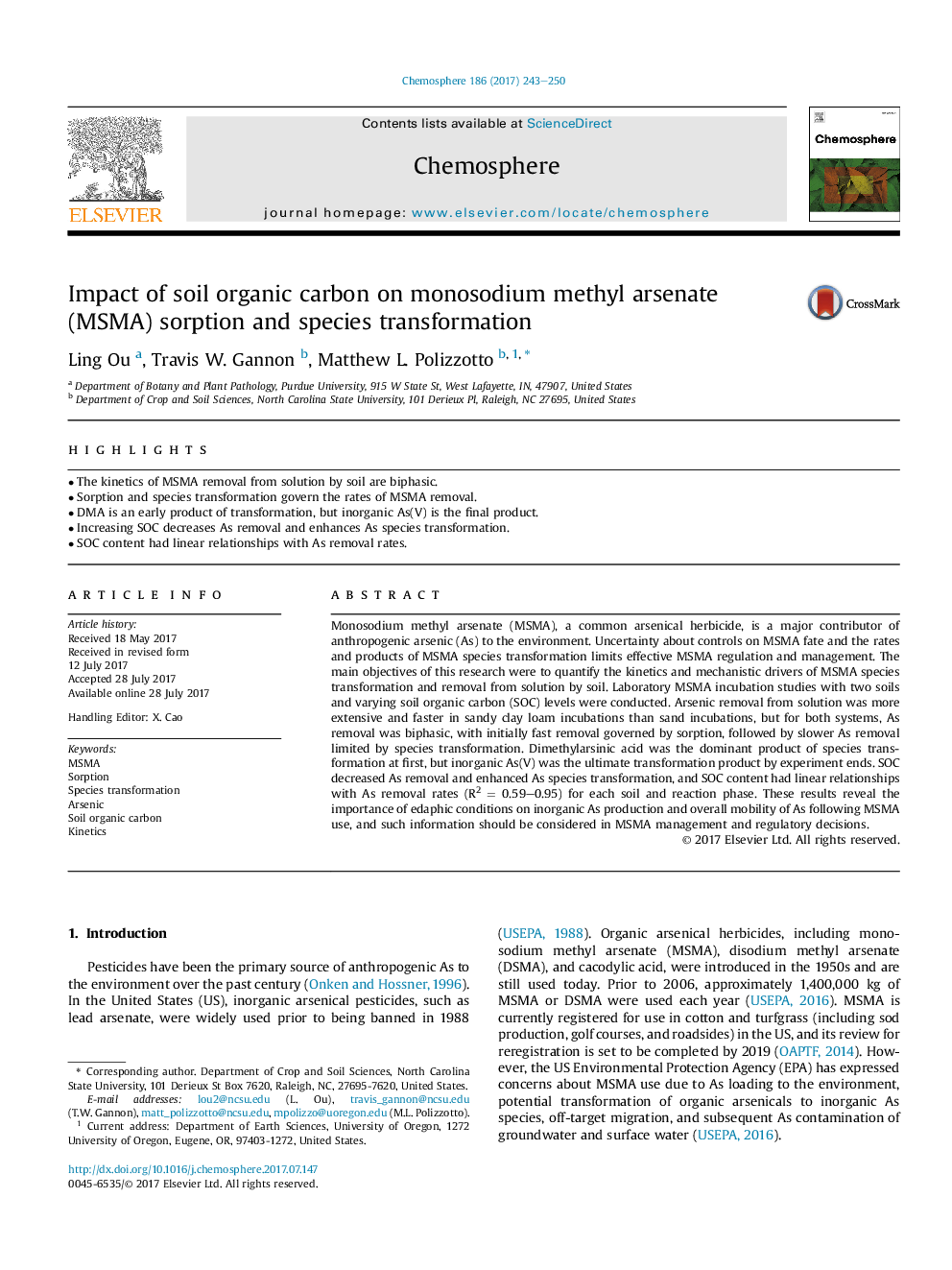| Article ID | Journal | Published Year | Pages | File Type |
|---|---|---|---|---|
| 5746017 | Chemosphere | 2017 | 8 Pages |
â¢The kinetics of MSMA removal from solution by soil are biphasic.â¢Sorption and species transformation govern the rates of MSMA removal.â¢DMA is an early product of transformation, but inorganic As(V) is the final product.â¢Increasing SOC decreases As removal and enhances As species transformation.â¢SOC content had linear relationships with As removal rates.
Monosodium methyl arsenate (MSMA), a common arsenical herbicide, is a major contributor of anthropogenic arsenic (As) to the environment. Uncertainty about controls on MSMA fate and the rates and products of MSMA species transformation limits effective MSMA regulation and management. The main objectives of this research were to quantify the kinetics and mechanistic drivers of MSMA species transformation and removal from solution by soil. Laboratory MSMA incubation studies with two soils and varying soil organic carbon (SOC) levels were conducted. Arsenic removal from solution was more extensive and faster in sandy clay loam incubations than sand incubations, but for both systems, As removal was biphasic, with initially fast removal governed by sorption, followed by slower As removal limited by species transformation. Dimethylarsinic acid was the dominant product of species transformation at first, but inorganic As(V) was the ultimate transformation product by experiment ends. SOC decreased As removal and enhanced As species transformation, and SOC content had linear relationships with As removal rates (R2Â =Â 0.59-0.95) for each soil and reaction phase. These results reveal the importance of edaphic conditions on inorganic As production and overall mobility of As following MSMA use, and such information should be considered in MSMA management and regulatory decisions.
